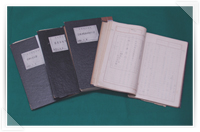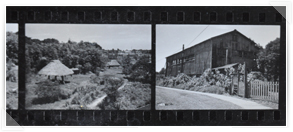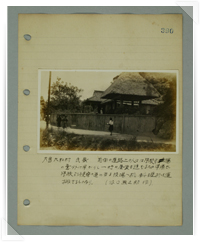The role of the International Center for Folk Culture Studies (ICFCS) is to make the historical materials and databases held by the Institute for the Study of Japanese Folk Culture (ISJFC) and the Research Center for Nonwritten Cultural Materials (RCNCM) available to the research community and to further expand and deepen related fields of research. Apart from the items collected by the Fisheries Systems Survey, which have served as the point of departure for research on Japan’s fishing communities and fisheries, the Institute’s vast holdings still await full use by scholars. They include original Ebiki materials on the everyday life of ordinary people, the Shibusawa photographic archive, the Institute’s administration documents, materials of the Shibusawa Foundation for Ethnological Studies, and the national survey database on folk implements.
ISJFC Collection of Historical Documents and Cultural Materials
Digital Collection of Paintings
Research Center for Nonwritten Cultural Materials Collection

NRIF’s Library
In the aftermath of World War II, over a five-year period starting in 1949, the “Survey and Preservation of Materials on Fisheries Systems” was conducted for the Fisheries Agency by the Institute for the Study of Japanese Folk Culture (ISJFC; then an independent foundation). With the aim of collecting materials on fisheries and fishing communities all over Japan, a group of about ten researchers traveled the coastline visiting old families and fishing cooperatives. The resulting cache amounts to some 300,000 pages of transcriptions and 50,000 donated and loaned artifacts. The transcriptions are held at the Library and Fisheries Museum of the Fisheries Research Agency’s National Research Institute of Fisheries Science (NRIFS) and at ISJFC. The artifacts are housed mainly at NRIFS, but a portion is held at ISJFC. This collection provides a record of fisheries systems, fishing gear and techniques, and related areas in the early modern era (1568–1868) and the modern era (post-1868).

The Nihon Minzoku Gakkai Museum
(open air exhibition)
and its Institute: Item No. 189
When the Shibusawa Foundation for Ethnological Studies was dissolved in 1999, its collection of books and administrative papers was donated to ISJFC. Shibusawa Foundation’s predecessor, the Association of Ethnology, had its origin in the Japanese Society of Ethnology (Nihon Minzoku Gakkai) established in 1934 under the patronage of Keizo Shibusawa; after the war, the Association functioned as both an academic organization and a research foundation until the former was revived in 1964. The archive is a fundamental resource for tracing the development of cultural anthropology in Japan.

Collection of ISJFC
Item No. A-13-17
ISJFC holds about 8,000 ethnographic photographs taken in the 1930s by research groups from Keizo Shibusawa’s Attic Museum (the prewar incarnation of ISJFC).
The photographs were taken mainly in Iwate, Akita, the Seto Inland Sea, Kikaijma Island, and the Tokara Islands; there are also a number from Taiwan and the Korean Peninsula. The photographers were mostly Attic group members who took part in the surveys, including Keitaro Miyamoto, Buntaro Takahashi, Saburo Yoshida, and Ichiro Iwakura. Many of the photographs appear in the Attic Museum’s more than 100 publications. ISJFC is currently cataloging and digitizing the entire archive.
